Bringing “flours” to a date!”
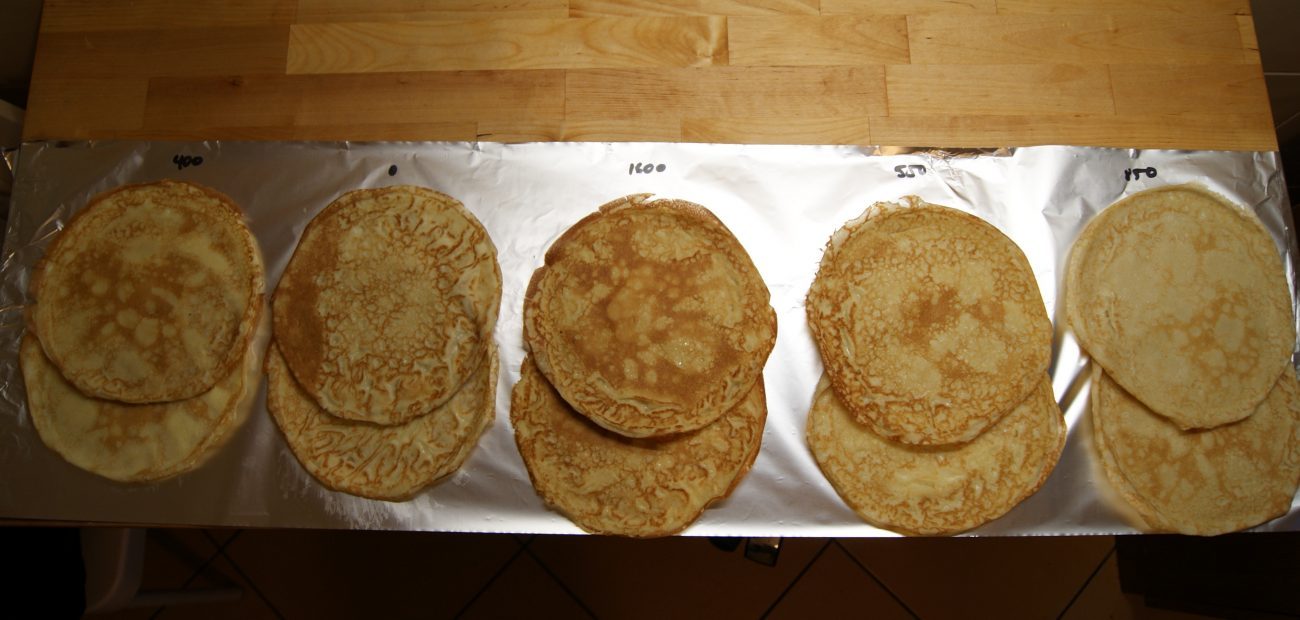
As much as many want to deny, crepes, pancakes, tortitas, palačinke and many other variants of a batter poured into a hot pan, it’s one of the best “treat yourself” and “treat the company” that you can prepare. It’s easy to prepare and with four ingredients you can make a great meal. It goes along with sweet and savoury complements and there is never enough of it.
Motivation
Have you ever wondered which flour is the best one to use for crepes or pancakes? There are many recipes for crepes and pancakes out there, but none of them are telling you why to use certain flour, if they say anything about the type of flour. Therefore, we set up an experiment to determine the differences in crepes/pancakes depending on the flour used.
NOTE: We did the experiment on crepes, but we believe that the same results apply for pancakes.
Theory
In supermarkets it is possible to find a variety of flours that can be distinguished by their type, whose designation can vary from country to country. Our flours are designated by numbers such as 400, 550, 1600, etc. These flours contain a different amount of protein, carbohydrates and ashes. We believe these differences can affect in the result of crepes, in terms of consistency, elasticity and flavor.
The recipe
The exact recipe here doesn’t matter much, we guided ourselves with this recipe, if it is consistent in terms of ingredient amounts and ratios. Therefore, we measured ingredients by weight, not by volume. The types of flour used can be found in table 1, and the recipe used follows:
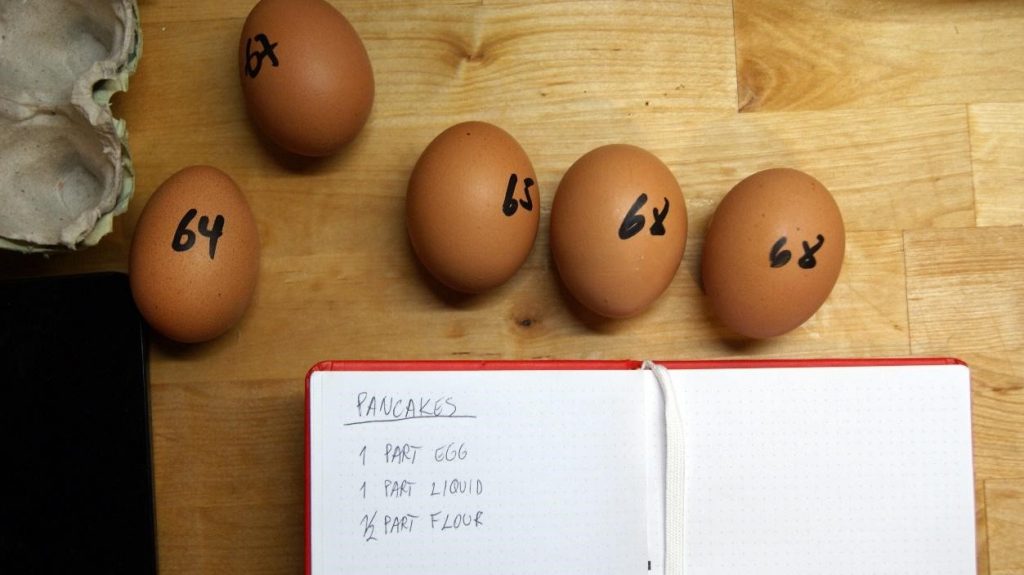
Weighing eggs to be consistent with the recipe
Ingredients:
- 1 part egg by weight
- 1 part liquid (½ milk, ½ water) by weight
- ½ part flour by weight ()
- 2 g salt
- 5 g sugar
- 5 ml sunflower oil
Flours Used
[table id=2 /]
Procedure:
Put all the ingredients in a blender and mix it until everything is combined. Put it in a container and let it rest for at least half an hour (we rested ours for about 18 hours). Heat up a nonstick pan a drizzle a teaspoon of oil in it. Pour 65 g of batter in 20 cm pan and wait until the bottom looks like the crepe in figure 3, flip it and remove from heat when done.
TEST
We carried out a series of test, to see some properties of the crepes, such as elasticity, texture, mouthfeel, aroma and flavor.
Elasticity
Elasticity test was carried out by folding a crepe two times and measuring its height, and putting pressure on the folded crepe and measuring its height again (Show in the following pictures)
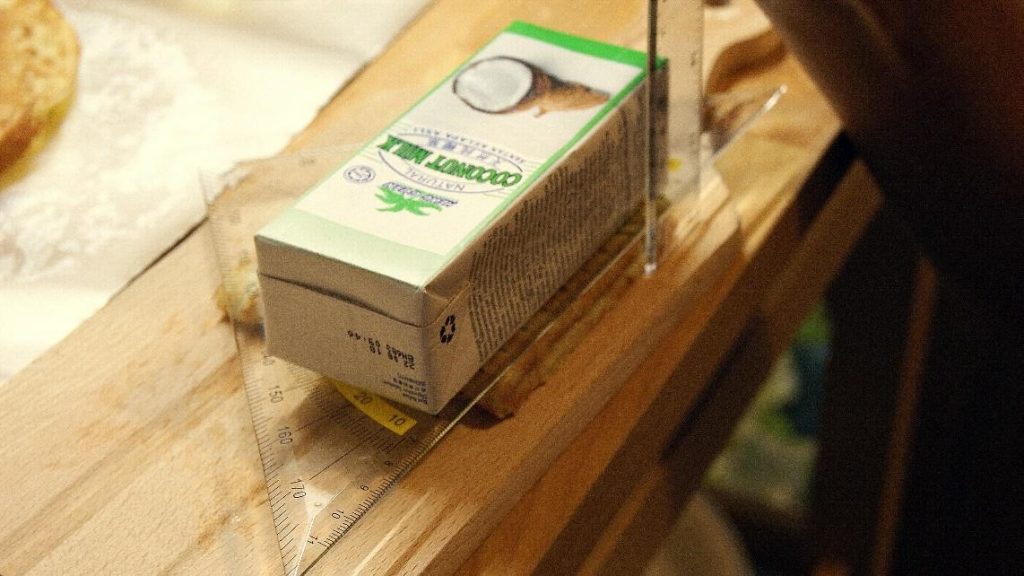
Measuring height with 220 g of added weight
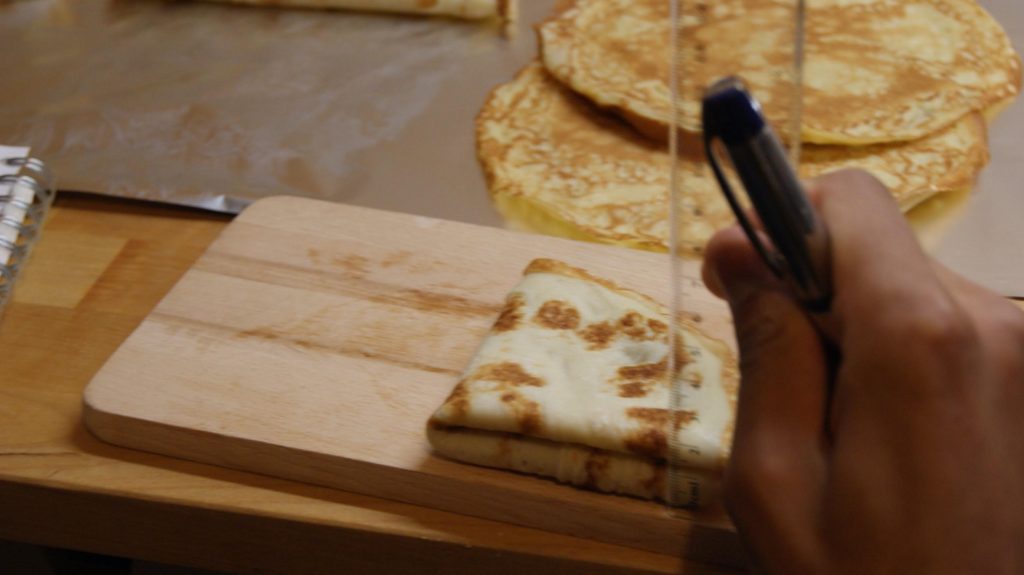
Measuring height without added weight
[table id=1 /]
The more elastic a crepe is the least difference in height it will measure. In this experiment the crepe made with TIP 400 flour is the most elastic and the TIP 1600 is the least elastic. Figures 6 and 7 display the crepe’s elasticity dependency on protein and carbohydrate content of the flour used.
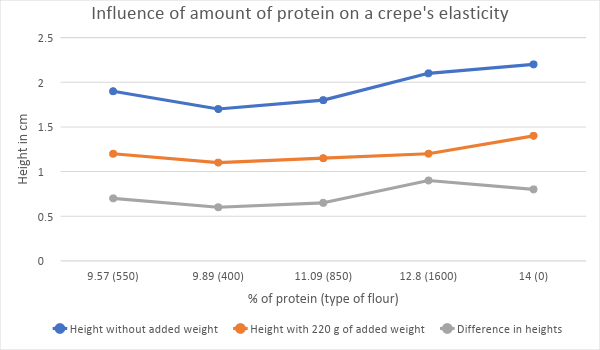
Influence of protein in flour on a crepe’s elasticity
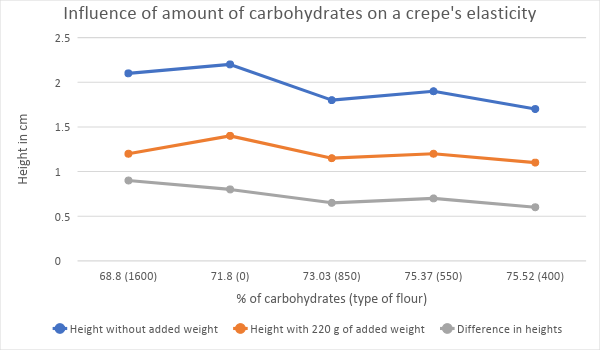
Influence of carbohydrates in flour on a crepe’s elasticity
The crepe made with flour 400, which has the highest carbohydrates and low protein content, is the most elastic. The crepes made with flours 0 and 1600 which have the highest protein and lowest carbohydrates content, are the least elastic. Therefore, it can be concluded that higher protein content in flour leads to less elastic crepe and higher carbohydrates content in flour leads to more elastic crepe
Subjective Properties
We also wanted to test other properties such as:
- Smell
- Difficulty to tear
- Mouthfeel
- Flavor
[table id=3 /]
[table id=4 /]
RESULTS
The amount of proteins and carbohydrates have a strong influence on the mouth feel of a crepe, in terms of elasticity and tearability. As a result crepes with high content of protein and carbohydrates (such as TIP 1600 and Farina 0) are difficult to chew and undeveloped flavor when cooked. On the other hand, crepes with low content in protein and carbohydrates (such as TIP 400) are closer to a mouth feel of an omelette and its flavor closer to egg.
Finally, with all-purpose flour (TIP 550) and TIP 850 types, we notices a nice mouth feeling and a taste of cooked crepe.
CONCLUSION
The best flours to use for crepes are TIP 550 and TIP 850. TIP 550 is more suitable for savory crepes and TIP 850 suitable for sweet crepes.
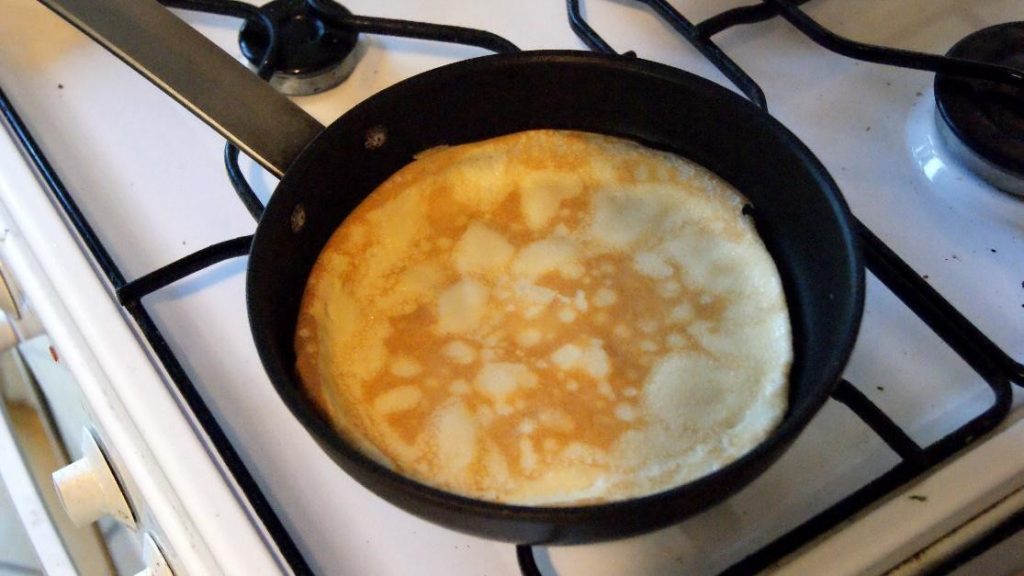
For a 20 cm pan, we suggest a portion of 60-70 milliliters of batter depending on the thickness desired.
You can see the experiments result in a pdf document (pdf, 879 KB). Enjoy and hope next time you bring flours, bring the correct one
